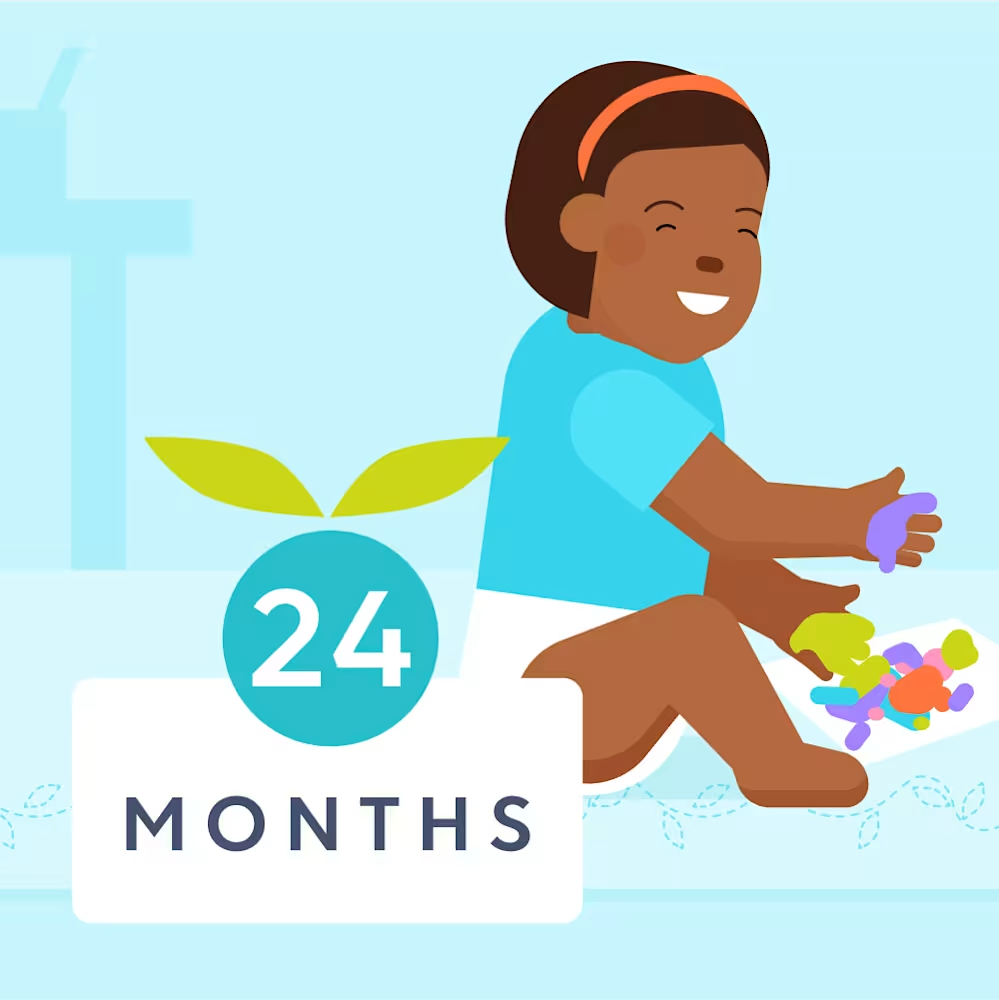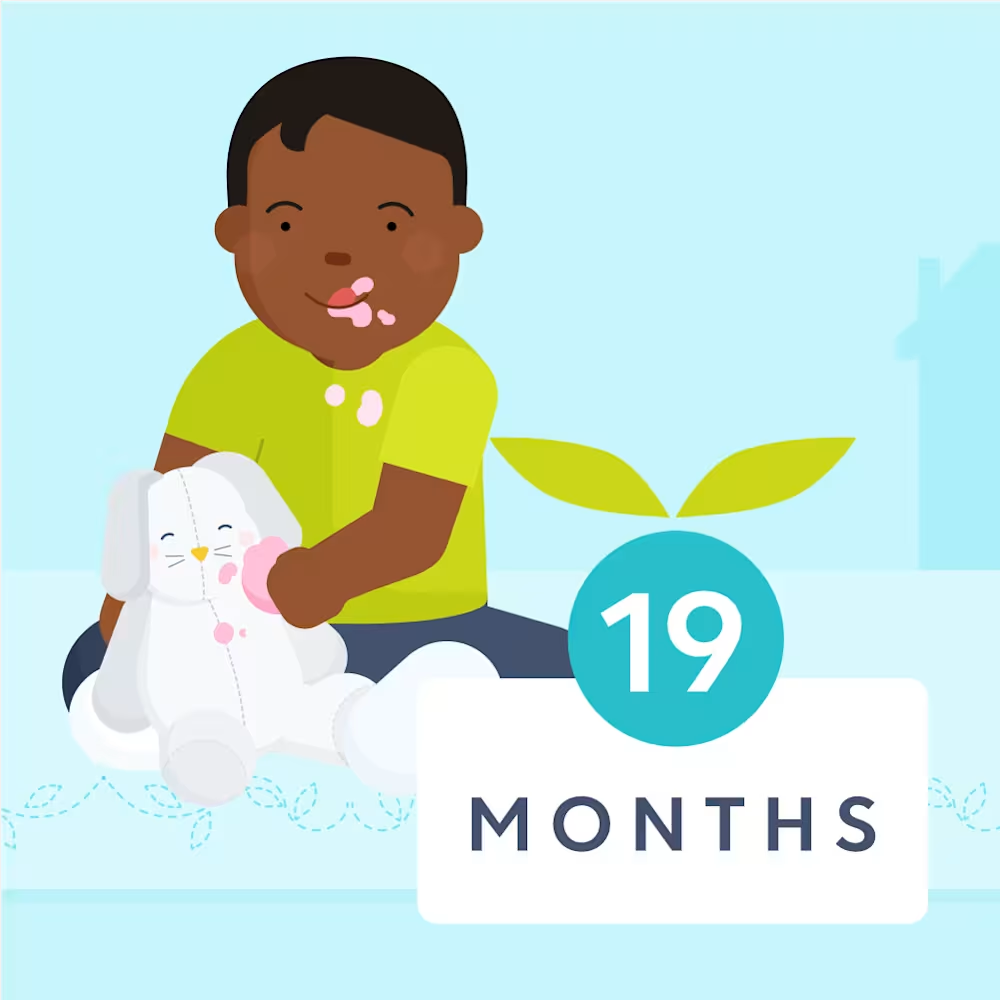Sleep training toddlers: How to, methods and tips
Updated Oct 16, 2025

Whether this is your first time dipping your toe into the sea of sleep training, or you have been ducking and diving for a while — toddler sleep, or lack thereof, can be a bit of a battle at times.
“Toddlerhood” typically refers to children who are between the ages of 12 - 36 months. Though this age range is quite vast, there are certainly common strategies that can be implemented across the board that can optimize your child’s sleep.
Every child is unique, and what works for one may not work for another. If you decide to sleep train, it's important to choose a that aligns with your parenting style and your child's temperament.
We are thrilled to help guide you through the process of your toddler!
Table of Contents
Can you sleep train a toddler?
Yes, toddlers can be sleep trained! Forming new sleep habits does take time and a truckload of patience. This age is about repetition. Though there can be a little more pushback at this age, learning to fall asleep without any is certainly achievable.
Here are some age-related articles that will help you navigate sleep training for toddlers:
And you can reference this if you’re interested in sleep training your preschool-aged kiddo:
How many nights does it take to sleep train a toddler?
It varies. The strategy you use and how quickly your toddler responds to change will affect how long it takes to see progress. Another thing to consider is how consistent you are — so readiness is key!
If you are implementing a faster approach your toddler could be consistently sleeping through the night within a week. A more gradual sleep training method can take a few weeks or more.
Sleep training methods for toddlers
| Sleep training method | Does it work for toddlers? |
|---|---|
| Gentle or gradual method | Yes! More time intensive. Some toddlers may become frustrated if progress is too slow or you are in the room constantly. These strategies require lots of responsive reassurance both physically and verbally. Can be less protest upfront. |
| The chair method | Yes! A good midpoint method. It works by gradually transitioning out of the room while providing reduced support over time. It’s successful as long as you do eventually leave the room. |
| Ferber method or gradual extinction technique | Yes! This can be a great method for families who want faster results or have other children in the house that cannot be left too long unattended. More upfront tears are common, however, they are typically short-lived. Some toddlers become more upset with the constant “check-ins.” |
| Cry it out or total extinction | Yes! This approach can be for those children who want “all or nothing.” These toddlers find if you are no longer going to help them to sleep, they would rather figure it out on their own. Any sort of reassurance from you is more upsetting. We do strongly recommend using a video monitor or quietly checking from the doorway a few times for safety reasons. |
No one is perfect and sometimes you need to mix and match. If you aren’t sure where to begin, start with a more gradual/gentle approach. If your toddler isn’t responding positively after a few nights, it is fine to switch methods.
Gentle or gradual sleep training method
These approaches make changes to sleep habits very gradually over a longer period. They involve a parent or carer to remain in the sleep space and offer a lot of physical and verbal reassurance.
For example, you may swap nursing for rocking to sleep. Next, you would pat your toddler to sleep. Finally, you transition yourself out of the room (chair method) so your child is falling asleep completely independently. This process is also known as “fading.” This method suits those families who prefer to take things slow.
The chair method
This is an ideal method if you want a gentle approach but prefer to make slightly faster progress.
Place a chair next to the crib and provide occasional physical and verbal reassurance. From there, you move your chair closer to the doorway over a few nights or up to a week. As you physically distance yourself from your child, you reduce the amount of reassurance given. Finally, you remove the chair altogether and walk out of the room before your toddler falls asleep. This method can be used as part of the gentle or gradual sleep training approach.
Note that this method can be more challenging if your child is sleeping in a bed, rather than a crib, especially if they are under 3 years of age. Most children this age haven’t yet developed the impulse control required to without the physical boundaries provided by the rails of a crib.
or gradual extinction technique
This is typically the most well-known sleep training method. It is considered a modified “cry-it-out” approach (CIO) however it differs from “total extinction” because you can still offer responsive settling when in the room.
After placing your toddler into their crib awake, you remove yourself from the room and implement timed “check-ins.” These checks begin with between 1 - 5 minute intervals and gradually increase over time. You only reenter the room at your designated time. This method suits toddlers who find your presence in the room distracting or you have other children to attend to at the same time.
or total extinction method
This can be the most controversial method of sleep training. It is very fast however it can result in some intense protest at first.
With this approach, you place your toddler into the crib awake and don’t return to offer any form of reassurance at all. Depending on your child’s temperament, some just do not find your presence or any physical touch helpful. These toddlers prefer to figure things out independently.
We do strongly recommend using a video monitor or quietly checking from the doorway a few times for safety reasons, especially if your child is an avid climber and may attempt to climb out of their crib.
Sleep training tips for toddlers
Here's some sleep training tips for toddlers:
Consistent routines cue toddlers on what is expected of them
It's all about the timing
Be patient and understanding
Find more details below:
Tip #1: Consistent routines cue toddlers on what is expected of them
Establishing a regular can signal to your toddler that it's time to wind down and prepare for sleep. Keeping the order of the steps consistent is most important. A bedtime routine typically takes between 30 - 45 minutes and a nap routine between 5 - 10 minutes. With older toddlers, using a to transition from one activity to the next can help reduce any
Tip #2: It's all about the timing
Following can really optimize sleep success. Both under and over-tired toddlers will struggle to fall asleep and stay asleep, so timing is important. We want to reduce those bedtime battles.
Tip #3: Be patient and understanding
Think of sleep training as a journey with twists and turns and not a race. Mastering those independent sleep skills takes time. Be patient with your toddler and understand that it may take a while for them to adjust to the new routine or form new sleep habits. Offer comfort and reassurance during the process, keep positive, and be prepared for some ups and downs along the way.
Can you sleep train a toddler for naps?
It depends. If your child is 2.5 years or older, it may be difficult to change the way they fall asleep during the day. Since your kiddo can stay awake for longer periods at this age, they may skip the nap entirely and this can lead children to drop their final nap too early.
Independent naps are harder to master than independent night sleep due to the reduction of sleep pressure during the day. For younger toddlers, nap training can work well. However, naps can often become short during sleep training causing overtiredness. This is temporary!
If naps have been short all day, offer a slightly earlier bedtime rather than additional naps as excess day sleep can contribute to more night wakes. Work on the nap for approximately 60 - 90 minutes if you can. If you stick with it, naps will eventually become longer and easier over time.
Can you sleep train toddler twins?
Yes! How you tackle that really depends if your twins are sharing a room and how much extra help is on hand. Some families may temporarily separate twins during sleep training, especially if one is sleeping better than the other. Use in between the cribs to try to muffle some of the noise if they are room-sharing. Try to keep the twins on a similar sleep schedule.
Can you sleep train during sleep regressions?
Yes, you can. During a , it may take a little longer, however, if sleep wasn’t great before that anyway, you might as well go for it!
What to do if sleep training my toddler is not working?
It's essential to tailor your approach to your child's temperament and needs. Remember, every child is different, and what works for one may not work for another.
Here are a few things to consider if sleep training is not working for you.
Ensure your toddler is falling asleep from an awake state at the start of each sleep session. If you help sometimes and not others, it can be confusing and often results in more tears.
Switch methods or go a little faster. Sleep training isn’t about mastering each step before moving on.
Check how long it is taking your toddler to fall asleep and adjust the timings accordingly. If they regularly take an hour to fall asleep, you may need to adjust bedtime later. Make sure you follow an age-appropriate schedule.
Could there be any underlying medical reasons causing sleep difficulties? If in doubt, we recommend consulting with your pediatrician.
If you have concerns about your toddler's sleep or if you're experiencing significant difficulties, don’t hesitate to reach out to us for a customized sleep plan through for additional guidance and support.
Takeaway
Sleep training your toddler can be a challenging yet completely rewarding experience: The reward is often more sleep and better moods for the entire family!
With consistency and the right support, establishing healthy sleep habits for your child can be an incredible gift.
Celebrate every small win and try to stay positive when faced with setbacks — it’s all part of the process.
Sleep training toddlers FAQ
If you're curious about what lies ahead with sleep training, glimpse into the future to see what you might experience with .
Share article:
Note: The content on this site is for informational purposes only and should not replace medical advice from your doctor, pediatrician, or medical professional. If you have questions or concerns, you should contact a medical professional.
1 Sources
Table of Contents
Share article:











